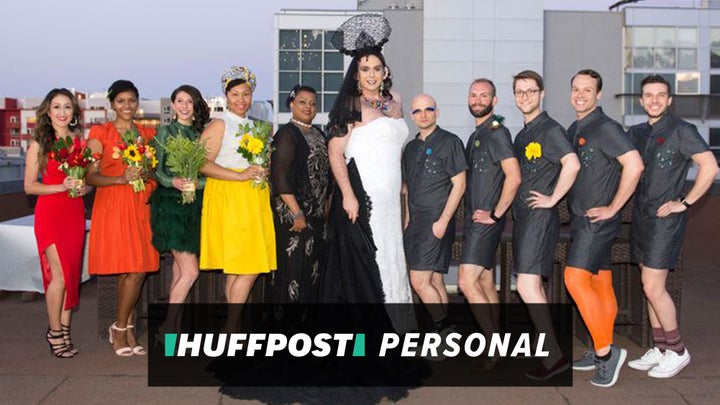
On May 26, 2018, I descended a stairwell, glided across a catwalk, and married Diane A. Lone, my drag alter ego, in front of 50 of my closest friends. In the San Francisco Chronicle write-up that followed the event, I asked readers to consider, “Is it a cry for help? Or is this a celebration and a community of love?”
In many ways, my wedding was boring in all of its adherence to tradition. My bridal party included ten individuals (mostly fraternity brothers) in colour-coded ensembles, a very expensive cake was purchased and consumed, and an officiant gave a speech about the power of love.
Were there some differences from the weddings I normally go to in Sonoma or Cape Cod? Sure. My dress had an eight-foot-long black train intended to evoke images of mourning, my bridesmaids spray-painted my dress during the part of the ceremony typically reserved for a ring exchange, and strippers delivered pizzas to my reception at midnight. I figured there had to be a little spice for a drag queen wedding ― after all, people flew across the country for it.
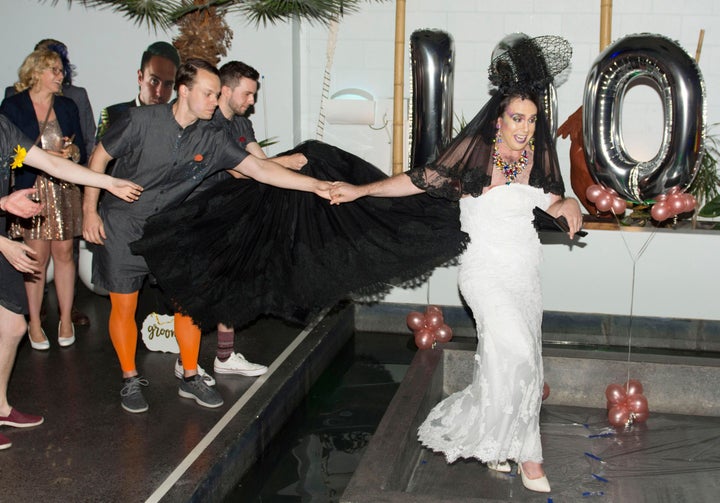
My wedding was designed to make folks question what it means to be single in a world that so heavily demands we enter into one exclusive romantic partnership and to serve as a celebration of love’s many forms. Being single doesn’t challenge society’s conventions in the ways that my other queer identities do ― it is seen as an obstacle to overcome, rather than a natural phase of human existence. In fact, a celebration of singleness was so confusing for some people that they assumed the point of my wedding was to come out as queer… again (and in a very big way).
Prior to my wedding, I was in a bad emotional space. I had gone on countless dates and gotten loads of feedback informing me why I was inadequate. I was told that my voice was too gay, my body too fat, too hairy or not hairy enough. I kept trying to make myself into someone else in the hope of pleasing a Tinder match, but, ultimately, I just ended up losing more and more of what made me myself. My priorities were morphing from helping kids learn how to read and being a reliable friend to getting photos at parties with influencers and making my body as tiny and firm as possible.
One day, a well-timed, targeted email ad appeared in my inbox. It asked if I needed a low-interest loan for anything... like a wedding. After getting ghosted for the umpteenth time by someone whose face and name I’ve already forgotten and after deleting all of my dating and hookup apps, I decided to apply for a $20,000 loan to throw a wedding for myself. I fully expected to get rejected. I mean, how could a company possibly approve a request that absurd? But, believe it or not, within 72 hours, $20,000 was deposited in my bank account and I officially crossed the threshold into the wedding industrial complex and began to plan my marriage to myself.

I wish I could say my wedding was born purely out of love and joy, but I was miserable as I began to craft the ceremony. Early iterations of the event included screenshots of people that had ghosted me and negative comments about my body from previous partners that I intended to blow up, place on poster boards and hang around the venue like a museum gallery of rejection and body shame. Through time and a bit of self-reflection, I was able to take the sharp edges off that pain and create an evening that acknowledged my personal growth and approach toward self-acceptance, but without all of the bitterness.
When I asked friends for their mailing addresses, they assumed it was so that I could send them a holiday letter and were a bit surprised when they got a love letter from me with a save-the-date magnet. The magnet showed me styled as B.B. Homemaker (Beyoncé’s character in the Why Don’t You Love Me music video) and respectfully requested their attendance to my wedding six months later.
Overall, my friends were supportive. Did I get jokes about “what happens if you want to divorce Diane?” and questions about the legality of the situation? Yes. But a website I created featured a robust FAQ section that helped clear up any confusion people might have had (and, for the record, my marriage is an obviously-not-government-sanctioned open marriage). As the big day approached, folks booked tickets, bought dresses, boas and body glitter, and prepared to celebrate my unconventional nuptials with me.
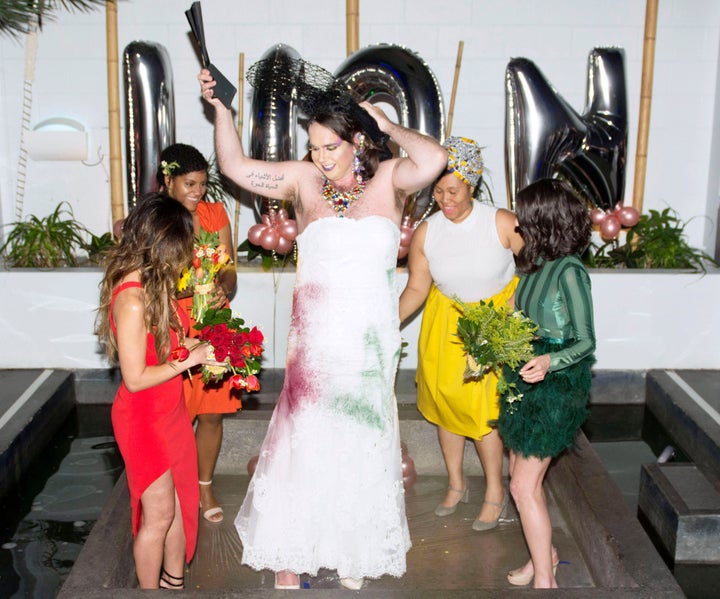
The actual event was a huge display of vulnerability: Would my friends feel comfortable in this space designed to be so uniquely and intentionally queer? Would they cheer at the right moments and laugh at my jokes? The answer to both was yes. Standing nearly eight feet tall from heel to headpiece, I have never felt more seen or better understood by my friends than on my wedding day. My friends, dressed in their boldest versions of eleganza, spent that entire night showering me and each other in love, positive affirmations and joy.
Truly, my only critique of my wedding was that it went by too quickly (and that I didn’t think to cut the cake during the reception). Even better, together, my tiny community used the occasion to raise over $6,000 for The Trevor Project, a queer charity that provides a dedicated suicide support line for LGBTQ youth.
Though I had put so much thought into planning my solo wedding and seeing that it went off without a hitch, one question I hadn’t considered as I began this journey was: What happens when the honeymoon is over? What happens when you enter the boring stretches of married life... without a partner?
I was so drenched in the saccharine ethos of empowerment and “you go, girl” vibes from friends, that it suddenly felt tough to just be, well, for all intents and purposes, still single. For months, I had an instant, surprising and memorable get-to-know-you conversation starter at any social gathering. I was able to talk about the specific pains of wedding planning with an added moral superiority of challenging society’s conventions. I was a punk rock princess, getting to have my cake, eat it too, and then have my friends tell me I still looked skinny in my wedding dress ― #goals!
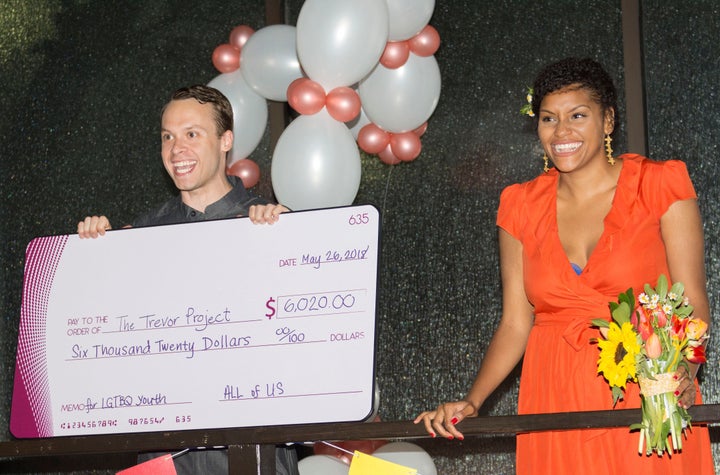
After the wedding, life went back to being as routine as it was before I decided to marry myself. To see 50 of my friends in one place and feel their joy and love was amazing, but the Sunday morning after came along and people flew back home to their own lives and obligations. On Monday, I was at work again and filing expense reports, wondering how much to share about my weekend with my co-workers.
The whole night seemed to have gone by in an instant. Shouldn’t $20,000 buy sustained enlightenment? Or does it just buy you a fancy party for one night? Is this what other people who have more “traditional” weddings feel like when the lights come on and the veil comes off? Furthermore, though I was now married to myself and had undergone a ceremony that celebrated my radical self-love, I still looked exactly the same on paper and to the world as I did before my wedding.
As I rejoined the real world, I began to dip my toes back into the dating pool and it surprised me as much as my friends. With my marriage to Diane, I genuinely thought of myself differently ― as a whole and complete person (or at least my version of it). I was ― and am ― now an individual able to embrace their masculine and feminine identities and I have a group of people who love me no matter how I look or feel. Getting married to myself helped me realise that I don’t need a romantic partnership, but I came to understand that I didn’t want to be closed off to the possibility of finding one with another person.
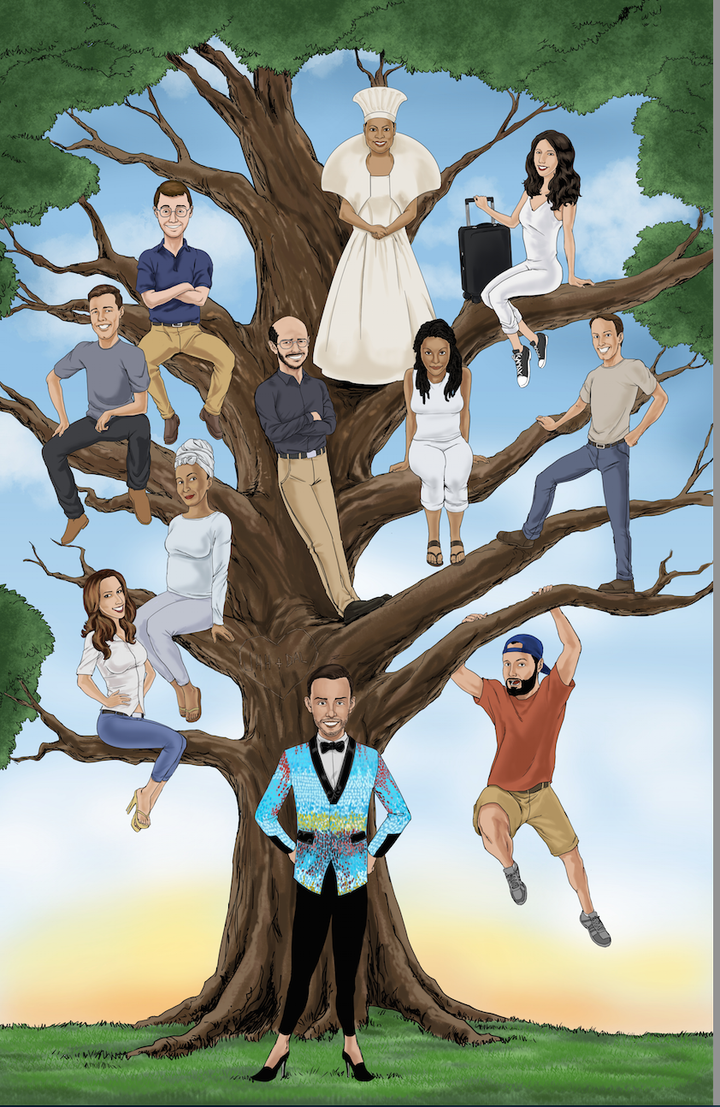
I wasn’t quite sure how it would feel or look ― both to other people and myself ― to approach dating as a recently married person. My schema had never involved dating as a full person before. Historically it had focused on how to get the other person to desire me... regardless of my feelings for them.
Dating is interesting now. More people seem interested in me now that I’m actively embracing my full self. I’ve had more second and third dates since my wedding than I’ve ever had in my life. But radical self-love can be scary to a potential romantic partner. Thanks to Diane, I now know that romance isn’t the only type of love that matters, and I’ve been able to make so many friends by simply having my wedding album present and discussing why I had the ceremony. I’m still single, but that now seems like just another fact about me instead of a burden that I’m constantly trying to overcome.
Getting married to myself gave me a new way to appreciate my singledom, but my foundation still gets regularly shaken when dating. Getting ghosted still hurts. Going on a five-hour date and then not receiving any kind of follow-up is confusing. Being rejected is tough. Some people are just plain mean. But I’m able to handle it a bit more gracefully now than a year ago. Rather than drinking a bottle of wine and thinking how horrible of a person I am, I can acknowledge that I’m in a different space than some people. Maybe, some day, I’ll find someone on a similar path as me. But maybe I won’t. Ultimately, I’ve accepted that my self-worth doesn’t depend on whether someone else finds me physically and intellectually attractive and wants to be in a relationship with me. That’s an important lesson to learn.
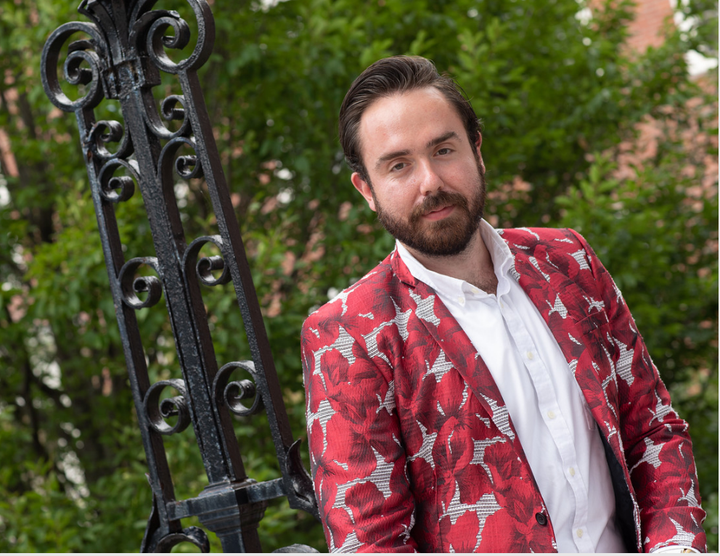
My drag name, Diane A. Lone, is a play on words based on my biggest fear: dying alone. For a long time, I thought the only way I’d be able to avoid that fate was to alter myself to become desirable to someone else. Thankfully, I discovered I could choose another approach, which is perhaps best summed up in the vows I said to myself on my wedding day: “Whenever you look in the mirror and tell yourself that you’re too fat, too ugly, not good enough, or whatever negative thought you have, know that it is the billions of dollars in advertising and hundreds of years of oppression designed to limit your greatness [speaking].”
My wedding might have been expensive and, at times, stressful but it was the best choice I could have made for myself, and I have no regrets. Getting married to myself reminded me that because I have so many friends and such a strong community, I’ll never truly be alone. And it helped me to understand that I’m fine all by myself.
A romance can be great, but so is a helpful roommate, reflective manager or a committed friend. Spending all of my time and energy trying to find “the one” was exhausting, disappointing and, in the end, unfulfilling for me. Getting married to myself showed me that there’s so much more to look for and live for in life and made me realise that the answer to the question I posed in the San Francisco Chronicle story is a call for help and a celebration of love and community. I’m happy with where it’s taken me so far and I’m excited to see where it takes me from here.
James Hilton Harrell is a graduate student at Harvard University and a retired drag queen. You can follow them on Twitter at @jhiltonharrell. All wedding photos courtesy of Elyssa Goodman.
Have a compelling personal story you want to tell? Find out what we’re looking for here, and pitch us on ukpersonal@huffpost.com